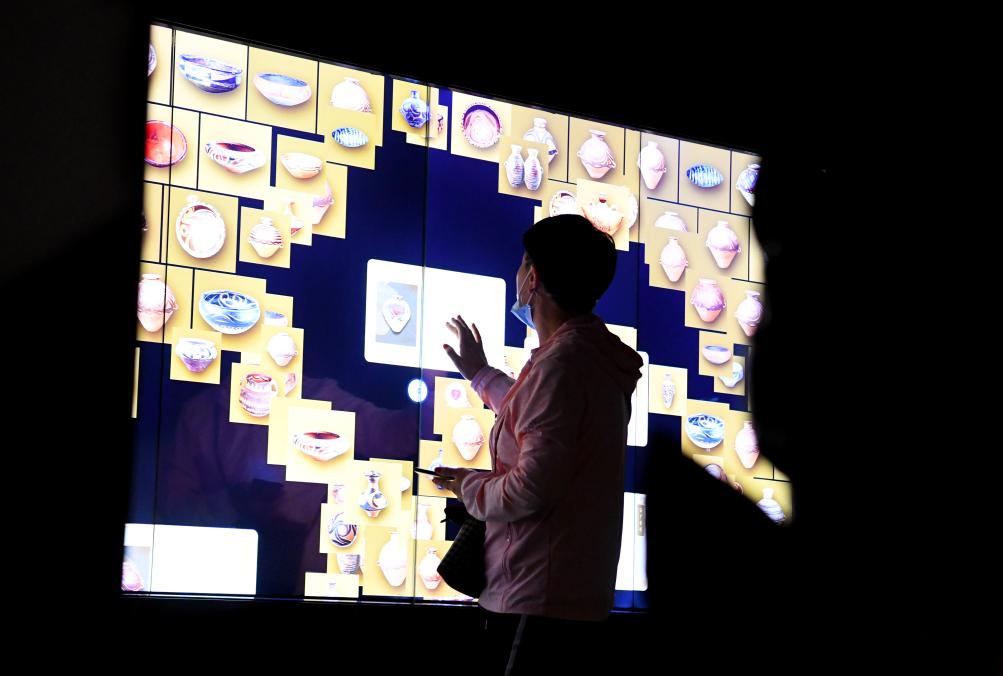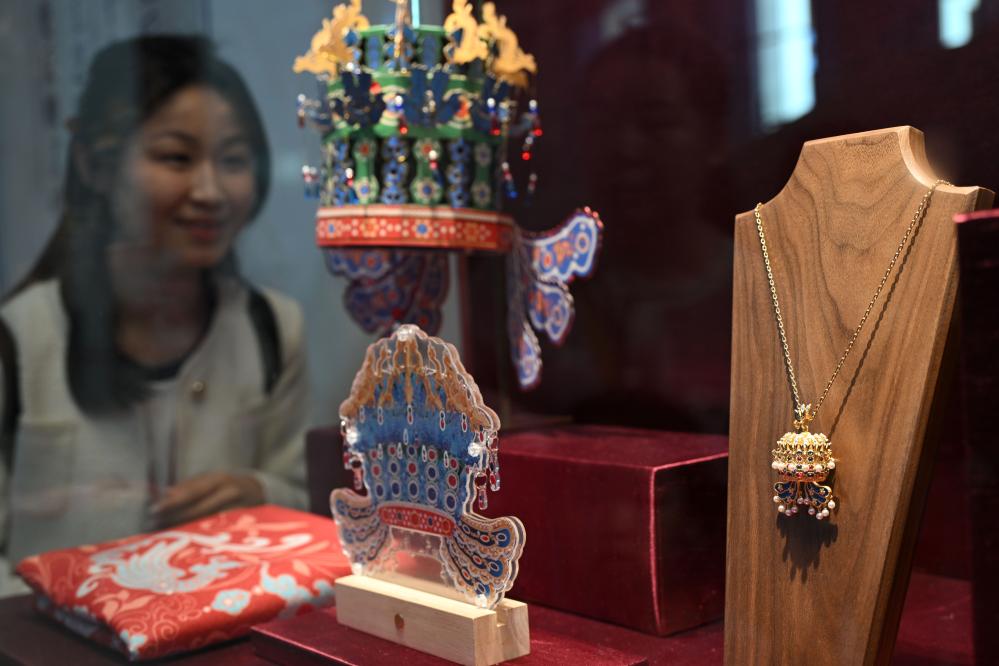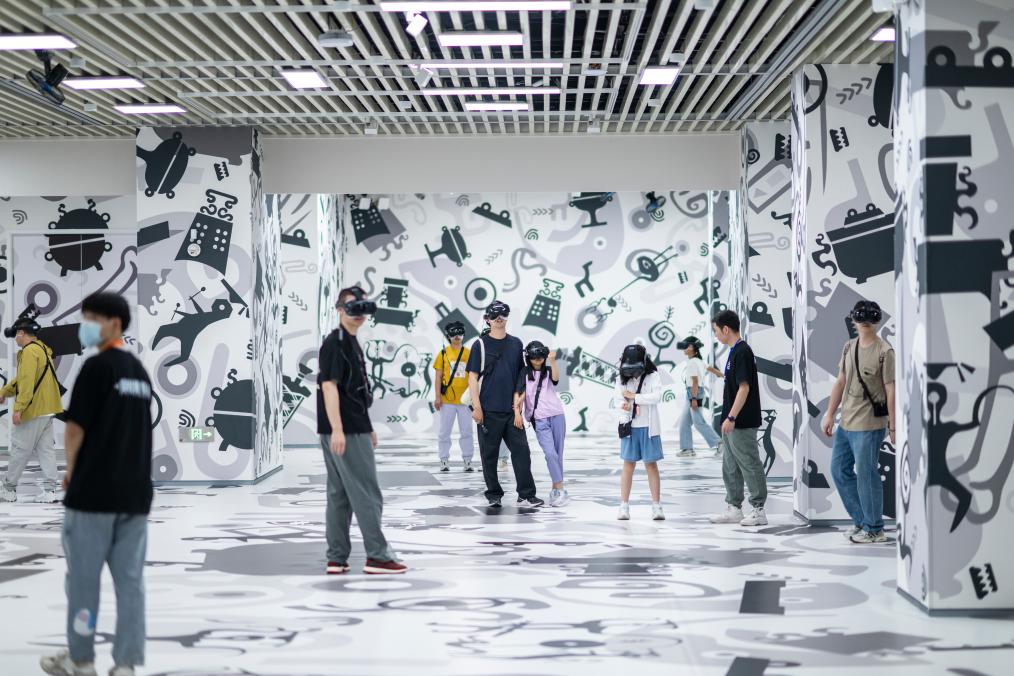May 18 is International Museum Day. The latest data released by the State Administration of Cultural Heritage shows that in 2024, 1.49 billion people across the country visited 7,046 museums, and the number of visitors and museums increased compared with the previous year.
The theme of this year's International Museum Day is "The Future of Museums in a Rapidly Change Society." From "the door is deserted" to "it is hard to find a ticket", from "cultural dessert" to "spiritual food", from cultural guardians to social constructors, today's museums break through traditional functions and limited time and space boundaries, and become a cultural link connecting the past, present and future in resonance with the times.
Breaking the tangible boundaries, the museum is "eternal" in the digital world -
8K ultra-high-definition scanning combined with spectral analysis allows the "green landscape" written by Wang Ximeng to be revealed on the screen; the copy of Zeng Houyi chimes has been collected, and the sound of the "king of ancient musical instruments" is expected to be preserved forever; the National Expo has left a whole exhibition hall for the national treasure Xizun, which can intuitively present the high-definition details of cultural relics and related academic achievements through various digital means...
Li Huabiao, director of the Data Management and Analysis Center of the National Museum of China, said that the digital model of the collection can be widely used in many fields such as online display, immersive exhibitions, as well as virtual restoration and digital protection of cultural relics, providing a broad space for the long-term preservation and sustainable use of the collection.

On September 24, 2024, visitors used multi-touch technology to learn about cultural relics at the Yangshao Cultural Museum in Henan. Photo by Xinhua News Agency reporter Hao Yuan
The new management, display and protection methods allow the information in the museum to transcend space and time constraints, bringing the audience a more multidimensional and three-dimensional cultural experience.
In recent years, AI technology has been introduced into all walks of life, and museums are no exception. From digital collection of cultural relics in the museum to rich visiting experience, from analyzing the ontological data of cultural relics to serving exhibition explanations and other social education activities, AI technology continues to expand the boundaries of museums, more and more historical scenes emerge in the algorithm "imagination", and more and more unsolved mysteries are deduced and solved in big models.
Breaking the exhibition framework, the museum walks into the homes of ordinary people—
Walking in the museum exhibition hall, you will find that more and more audiences are taking photos of cultural relics in the exhibition cabinet with "shrinkable versions": people "bring the museum home" by purchasing cultural and creative products, and the popular cultural and creative products have also attracted more people to enter the museum.
According to incomplete statistics, in 2024, the annual sales of cultural and creative products of many museums such as Sanxingdui Museum, Palace Museum, Shanghai Museum, China National Museum, and Suzhou Museum exceeded 100 million yuan. Young audiences of "post-00s" and "post-90s" are important forces for museum visits and the main force in museum cultural and creative consumption.

On March 25, the audience purchased the Phoenix Crown Necklace at the National Museum of China in Beijing. Photo by Xinhua News Agency reporter Jin Liangkuai
Xiao Zhao, a college student, is a loyal fan of museum cultural and creative products. She said: "Every time I visit the cultural and creative area, as long as the price is right, I will buy it when I meet someone I like, and 'plant grass' for my classmates after I go back." Some parents are also willing to buy museum cultural and creative products: "Some exhibits are ignored when watching exhibitions. When buying a cultural and creative product home, you can continue to explain to your children and supplement relevant knowledge."
Museum cultural and creative products penetrate into various scenes of people's lives. Today, they are no longer limited to simple reproduction of cultural relics, but provide more innovative interpretations. Cross-border cooperation such as "museum + catering", "museum + beauty makeup", "museum + games" expands the "new blue ocean" of cultural consumption, and "travels in both directions" of cultural experience and consumption upgrading.
The innovation of cultural and creative products has enabled the museum to realize its vision of "never ended" in a sense. Cultural inheritance and communication breaks through time and space restrictions and continues to bring rich and diverse cultural nourishment to the public.

On April 29, the audience used VR equipment to experience the VR experience project "Traveling through the Bronze Age" launched by the Hubei Provincial Museum. Photo by Xinhua News Agency reporter Wu Zhizun
Breaking the traditional positioning, museums become more fun-
Now, the museum's model of "I show you and see" and "glass cabinet + commentary card" is being subverted.
At Luoyang Ancient Tomb Museum, audiences can "face with the tomb owner", listen to the stories of the tomb owners in 10 real tombs, and explore the truth of the tomb;
At the Xuannan Cultural Museum in Beijing, the immersive guided drama "Xuannan Traveler" combined with the exhibition to interpret the "spirit of scholars", which moved many viewers;
At the Hong Kong Palace Museum and the Beijing Palace Museum recently unveiled the "pattern" to carry the way--The Palace At the Museum’s Immersive Digital Experience Exhibition, the multimedia display leads the audience through the past and present, immersed in the beauty of Chinese patterns... Zhang Yinglan, professor at the School of Art and Archaeology of Zhejiang University, pointed out that the public pays more attention to the needs of embodied perception and social sharing in the museum field, especially in today’s rapid development of digital technology. If a museum wants to distinguish it from other cultural product suppliers, it must pay attention to this demand of the public and give full play to its unique advantages.
From "things-centered" to "people-centered", from "do not touch" to "all-round interaction", today's museum sincerely invites people to participate in exchanges and feel them with their hearts, so that cultural relics can be reborn in dialogue and allow audiences to become the "co-creators" of civilization inheritance. (Reporter Yang Zhanfei)